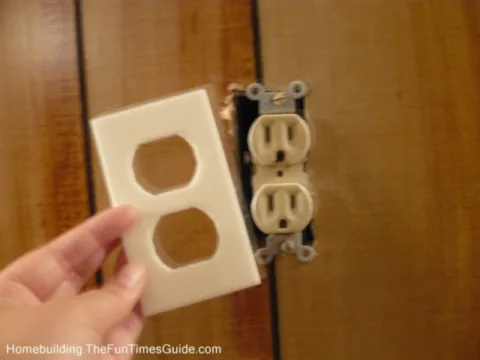One of the least expensive and easiest ways to reduce heating and cooling costs is to insulate your electrical outlets.
While most people don’t consider this to be a major source of energy loss, keep in mind that behind every faceplate that covers a light switch or electrical outlet is a hole in your wall!
Adding a foam insulation gasket allows you to create a tight seal between the wall and the faceplate, without altering the appearance of the socket.
Don’t make the mistake of thinking that this is a project for the Fall. Foam gaskets will keep your home cooler in the summer and warmer in the winter!
Finding Insulation Gaskets
The most difficult part of this project will be finding the foam insulating gaskets locally.
Although many home improvement centers carry them, they can be difficult to find or expensive — depending on the season and the region in which you live.
If this is the case in your area, consider buying them online, where each foam gasket should cost less than 50 cents apiece.
Don’t Make Foam Gaskets Yourself!
Although these electric socket insulators seem as though they would be easy to create yourself, it’s best to buy them — because they will be made of flame retardant foam.
Using other materials for this project could inadvertently result in an electrical fire.
This includes injecting spray foam insulation into the electrical socket cavity, which not only could lead to a fire, but also makes the socket difficult to repair in case of a problem.
Before You Start Installing Foam Gaskets
Before starting this project, switch off the circuit that services the part of the house you will be installing the gaskets on.
This will prevent any electrical shocks when installing the insulating gaskets.
How To Install Foam Insulation Gaskets
Installing these foam insulators is an easy task that requires only a flat head screwdriver.
Just use the screwdriver to remove the screw (or screws) that hold on the faceplate of the outlet or light switch.
Then punch out the appropriate pieces so that the foam cutout will fit over the hole that the electrical socket makes.
Then replace the faceplate using the screws you just removed.
It’s A Great Way To Make Your Home Energy Efficient
While it’s an easy DIY project, it is a bit time-consuming to do all of the wall covers in your home.
Because of the tediousness of this project, consider installing the foam gaskets with other energy-saving items — such as weather stripping. Or, just work on one or two rooms at a time.
Here’s how to do a home energy audit yourself to see how efficient your heating and cooling system is and where air might be leaking in or out of your house.
Must read: What’s The Difference Between A Home Energy Audit & A Home Energy Review?




